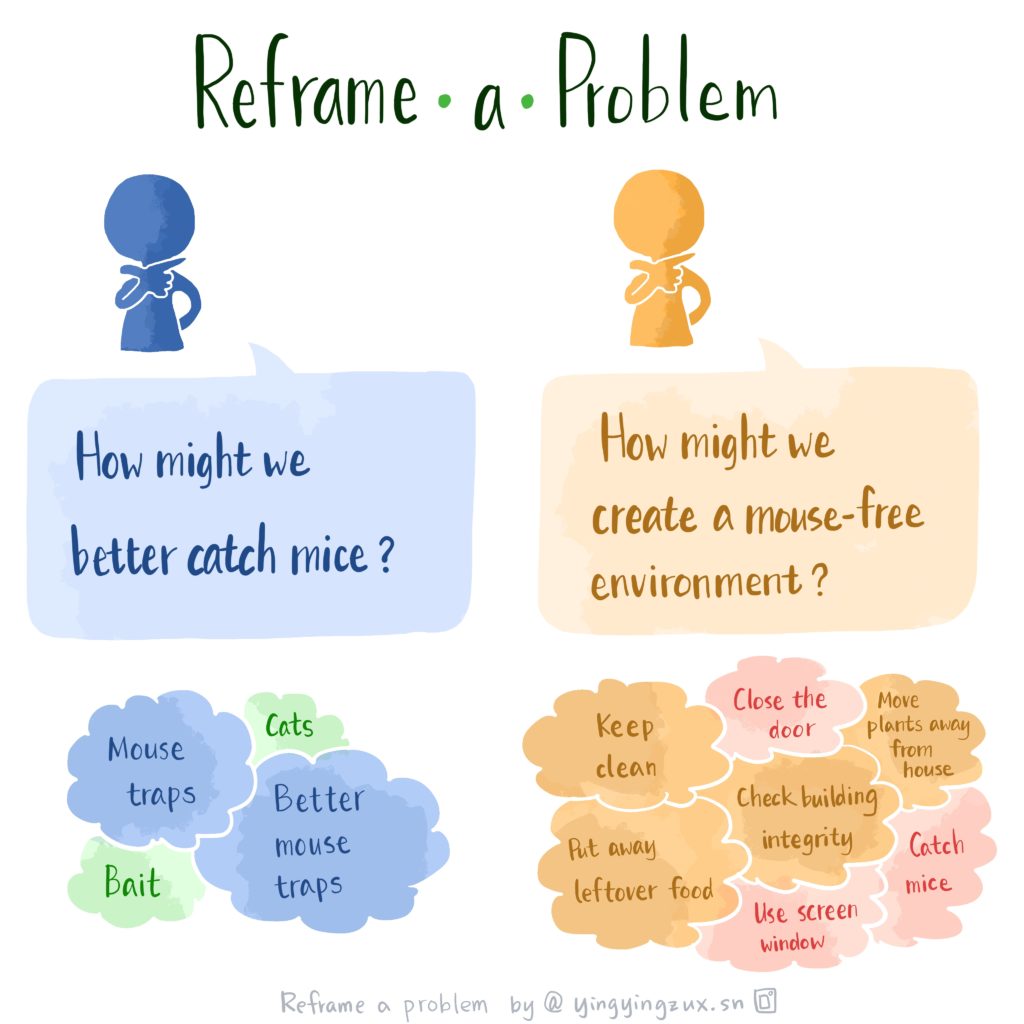I used to live in a community where the management put rat traps in some corners outside the buildings to prevent rats from entering residents’ homes. These traps contained bait and mechanisms that prevented rats from escaping once they entered.
Did these traps work?
Rats reproduce at an alarming rate, and while traps can catch a few, can they capture all the remaining rats? Moreover, the community was surrounded by land, and rats could continue to dig holes into residents’ yards and sneak into their homes when people weren’t paying attention.
The answer is no, they didn’t work.
What I found interesting was why the community chose to use rat traps as a solution at that time.
I guess the reason is that when people think about rats, they naturally ask, “How can I catch rats?” or even “How can I catch rats so they don’t enter my home?”
Trying to answer this question, rat trapping comes to mind. Traditional rat traps kill rats instantly, which is quite disgusting. So, why not opt for something more advanced that leaves no trace of the dead rat?
However, as a resident, I don’t want to see dead rats, and I don’t want to see live rats in the community or my home – I care about having a rat-free environment. To solve this problem, there are several methods:
- If the interior and surroundings of the house are clean and sanitary, rats won’t be interested in the area. Put leftover food in the refrigerator promptly; clean up any food debris from dishes and floors; close lids tightly on items with strong smells, like toothpaste and face cream.
- If the house’s walls and structure are intact and without cracks, the chances of rats entering are reduced. Close doors when entering or leaving the house; when opening windows, make sure to put screens in place; if there are plants outside, move them away from doors and windows to prevent rats and insects from climbing in.
- If you notice signs of rats inside or outside the house, find effective rat traps. Once you’ve caught a rat, contact pest control professionals to handle the rat’s body.
Community management can take these approaches, reminding each household to prevent rats and improving the cleanliness of public facilities. This should be much more effective than merely placing a few rat traps.
By simply changing the question from “How can I catch rats better?” to “How can I have a rat-free environment?”, the thought process is broadened and is no longer limited to catching rats. The rephrased question is based on residents’ fundamental desires, making the solution more targeted to the root problem.

I first learned about reframing a problem from the book “Creative Confidence.” This book was co-authored by David Kelly, the founder of the well-known design firm IDEO, and his brother and partner, Tom Kelly.
The book provides a few tips to make reframed problems more human-centered, allowing for solutions that focus on people’s needs and offer better user experiences.
- To find the right problem, ask several “whys” and don’t settle for superficial answers. If the problem itself isn’t correct, it’s not worth solving. If you act hastily without understanding the problem, you may end up treating the symptoms rather than the root cause, which can be counterproductive. Eric Ries also mentioned the “Five Whys” method in his book “The Lean Startup” to get to the root of a problem.
- Look at the problem from a different perspective. If you’re a designer, consider what users care about instead of what you can design. If you’re a parent, imagine the problem from your child’s perspective.
- When a solution comes to mind, don’t rush to adopt it. Put it aside and think about other possible solutions. Discuss with others to gather diverse ideas. Then, evaluate these solutions and find the optimal one that addresses the root problem.
As a user experience designer for digital products, I often encounter situations where I need to reframe problems at work.
For example, when users provide feedback on a product, saying that there are too many clicks on a page and asking if they can be reduced, the wrong approach is to immediately change the page and reduce the number of clicks as much as possible.
Why is this approach wrong?
Users’ feedback is often based on their experiences, leading them to conclude that there are too many clicks.
If a designer simply forms a problem based on user feedback, like “How can we reduce the number of clicks on the page?” and then reduces the clicks, it may not only mask the real problem but also potentially worsen the user experience.
The right approach is to hold back and think first, understanding the motivations behind the user’s feedback. This way, you can determine the reason for the feedback, whether it’s due to unnecessary clicks, difficulty in finding desired information on the page, a requirement to input too much information, or some other reason.
Only by understanding the root cause can you reframe the problem “How can we reduce the number of clicks on the page?” to the real one. Then, you can explore various solutions for that problem and choose the best one.
Check out my write-up in Chinese 《视觉笔记 • 重构问题,避免头痛医头、脚痛医脚》.